Wednesday, October 7, 2009
AN INTERVIEW - Sandra (Sam) Bradley - Ground Zero: A Paramedics Perspective
Q - How long have you been an EMT and why did you choose this field of work?
Sam: I’m in my 30th year, believe it or not. I was an EMT-1 for three years, then, became a paramedic. You’ll hear a number of people from my generation talk about being inspired by the TV show “Emergency.” It was the first to show the world about the new role of “paramedics” and the concept of pre-hospital care. For me, the idea of saving lives was much more attractive than serving steaks and wine in a dinner house. Not everyone can do this kind of work, I found out. It’s best suited for “Type A” adrenalin junkies who thrive on challenge. I guess I was one of them. When my time was over in the field, I served several years as a field supervisor and clinical coordinator. Today, I educate the new generation of EMTs , paramedics and firefighters.
Q – Have you experienced the challenge of having to ‘prove’ yourself in a career filled largely with men?
Sam: Oh yes! Remember, my career blossomed in the early 1980s. It’s very different now. I was the only female in my EMT class and one of just a handful in my paramedic class. My first ambulance company job was in Los Angeles County. I was the only female on my shift. It took a while for me to develop trust with the firefighters and become accepted, not just as a professional, but as a woman. It developed into a great working relationship and, as an EMT, they taught me much of what I needed to know to be successful in paramedic school. I faced a larger challenge when I decided I wanted to work in a fire department that contracted with my ambulance company for paramedic services. They were one of two cities we served that “didn’t allow” females. The claim was that they didn’t have proper sleeping arrangements. I made an agreement with another paramedic to work the day half of a 24 shift so he could go to school. Once I won the confidence of the firefighters and company officers, I was able to work in a full time spot when the other medic left. This city had no female firefighters or police when I started. I was the first. This went well for five years until a captain, who was known to everyone as a chauvinist, became the Chief in charge of EMS. The first thing he did was tell my company he didn’t want me there anymore. I was unceremoniously moved to another city. There were no laws around discrimination like there are now. The main thing I learned from this was that relationships are what you make them. I saw a lot of young female EMTs try to be “better” than the firefighters and cop a lot of attitude. They were never successful in developing positive relationships. I had to work hard to gain trust and acceptance, but staying in a positive frame of mind, being flexible, and doing the best job I could for my firefighter partners made the difference.
Q – What is the most rewarding part of your work?
Sam: Knowing that, in a moment of crisis for a patient and their family, I contributed something positive. It may have been administering lifesaving fluids, bringing back a dying heart with defibrillation; providing pain control; or sometimes just offering psychological support. We can’t save every life, undo a critical trauma, or make a sick kid suddenly well, but doing whatever my scope of practice would allow me to in giving stabilization to a patient and comfort to a family made a difference. I’d like to think I did save a life or two along the way. This is even more so the case in disaster medicine. We can’t remember all the people we tried to help, and know we’ll never have closure on what happened to them, but we do know the simple acts of kindness and support we gave them in the darkest moment of their lives will stay with them forever.
Q – Tell us your most frightening moment during your work as an EMT.
One day I was standing in the dispatch center for my ambulance company and we received a call for an auto vs motorcycle collision only a few miles away. It was odd that the fire department called back to advise us that this was a “traumatic full arrest.” Only after several minutes on scene did I realize this was an attempt to forewarn us that the patient was known to us. When we arrived, we saw the destroyed motorcycle all the way across the four lane highway and the young male patient on his back. Firefighters were ventilating him and doing chest compressions. I began the rote skill of setting up an IV. Rick, one of the fire medics, turned to me and said, “It’s Frank.” It didn’t sink in for a few minutes that this Frank was medic that worked for my company. I advised the dispatch center that this was an “employee involved” incident and to respond a field supervisor. The supervisor that arrived was my good friend and ex-partner who, with another employee, took over moving Frank into the ER. Even the hardened trauma nurses had a difficult time working on someone they knew … one of “us”. Frank didn’t survive. None of us knew how to feel or what to do. I realized then, that those of us in EMS tend to weave this web of invulnerability around ourselves and think bad things won’t happen to those whose job it is to save others. Frank’s sudden death was a rude awakening. It made us painfully aware of our own mortality. There was no real critical incident stress program back then, so we just did the best we could. We commiserated with each other all week until the funeral. The firefighters rode with us during the procession. I thought it was over then, and we could move into healing. Two years later, I learned what post traumatic stress disorder was when this incident resurfaced during a first aid class I was teaching. It was then I made up my mind that if I ever had an opportunity to help other EMTs, medics and firefighters avoid PTSD, I would. This was reinforced after a major airline disaster in 1986 in the City of Cerritos. Years later the opportunity would come, and CISM became a major part of my life.
Q-Prior to your story, Ground Zero: A Paramedic’s Perspective being selected for inclusion in TO THE RESCUE, did you have previous writing /publishing experience?
Sam: I have written for EMS publications for many years. My first feature article was in the Journal of Emergency Medical Services (JEMS) in 1991. The article dealt with the pre-hospital treatment of the deaf and hearing impaired. At the time, I was pursuing a degree in sign language interpreting and realized there was little education for EMS providers on this subject. I have also written and rewritten a number of EMS textbook chapters. I’m currently working on a proposal for a book about, and for, disaster responders. The only fiction work I ever considered for publication is a novel I began over 20 years ago that started as a personal journal. It became a story about three firefighter-paramedics and leaned heavily on people I worked with, and my own personal experience. In 1996, when I moved to Northern California, it sat in a file for the better part of 10 years. I picked it up again when the characters suddenly appeared in my head and began harassing me and giving me new material. It’s now going through final edits. With luck, it may someday sit on my bookshelf next to “To the Rescue”! I’m also working on a short story for a friend’s podcast. Now that I’m working for myself, I intend to make writing a larger part of my life. I want to get into projects that will to stretch my boundaries in both non-fiction and fiction.
Q – What is next for Sam Bradley?
Sam: Working as a consultant, I do firefighter training; teach EMT classes at the local community college; and do quality improvement for a dispatch center and an EMS agency. Then, of course, there’s my local, state and federal disaster work whenever the call comes. I’m going to do some marketing for “To the Rescue” and, hopefully, a lot more writing. As I said, I have a book proposal to finish and I’m doing final edits on my novel. I plan to either publish it or podcast it. Podcasting has become another area of interest. I’ve produced a few already and plan to provide both real world disaster/EMS stories, and fiction works. “To the Rescue” has shown me how fantastic it is for those who do disaster work to have their stories heard. There are so many thought-provoking experiences that need to be shared. As well as acknowledging the selfless contributions of disaster health care workers, hearing about positive experiences that come from helping disaster victims might also encourage more people to get involved. Telling these stories can also be cathartic for the author. I don’t think I told you, but, in eight years, I had never been able to record my Ground Zero experience. When you gave me the opportunity to contribute to this anthology, I realized it was time. It provided healing that I hadn’t acknowledged that I still needed. This story was clearly meant to see the light of day and I feel good for having made the effort. I thank you for the opportunity!
Sam: I’m in my 30th year, believe it or not. I was an EMT-1 for three years, then, became a paramedic. You’ll hear a number of people from my generation talk about being inspired by the TV show “Emergency.” It was the first to show the world about the new role of “paramedics” and the concept of pre-hospital care. For me, the idea of saving lives was much more attractive than serving steaks and wine in a dinner house. Not everyone can do this kind of work, I found out. It’s best suited for “Type A” adrenalin junkies who thrive on challenge. I guess I was one of them. When my time was over in the field, I served several years as a field supervisor and clinical coordinator. Today, I educate the new generation of EMTs , paramedics and firefighters.
Q – Have you experienced the challenge of having to ‘prove’ yourself in a career filled largely with men?
Sam: Oh yes! Remember, my career blossomed in the early 1980s. It’s very different now. I was the only female in my EMT class and one of just a handful in my paramedic class. My first ambulance company job was in Los Angeles County. I was the only female on my shift. It took a while for me to develop trust with the firefighters and become accepted, not just as a professional, but as a woman. It developed into a great working relationship and, as an EMT, they taught me much of what I needed to know to be successful in paramedic school. I faced a larger challenge when I decided I wanted to work in a fire department that contracted with my ambulance company for paramedic services. They were one of two cities we served that “didn’t allow” females. The claim was that they didn’t have proper sleeping arrangements. I made an agreement with another paramedic to work the day half of a 24 shift so he could go to school. Once I won the confidence of the firefighters and company officers, I was able to work in a full time spot when the other medic left. This city had no female firefighters or police when I started. I was the first. This went well for five years until a captain, who was known to everyone as a chauvinist, became the Chief in charge of EMS. The first thing he did was tell my company he didn’t want me there anymore. I was unceremoniously moved to another city. There were no laws around discrimination like there are now. The main thing I learned from this was that relationships are what you make them. I saw a lot of young female EMTs try to be “better” than the firefighters and cop a lot of attitude. They were never successful in developing positive relationships. I had to work hard to gain trust and acceptance, but staying in a positive frame of mind, being flexible, and doing the best job I could for my firefighter partners made the difference.
Q – What is the most rewarding part of your work?
Sam: Knowing that, in a moment of crisis for a patient and their family, I contributed something positive. It may have been administering lifesaving fluids, bringing back a dying heart with defibrillation; providing pain control; or sometimes just offering psychological support. We can’t save every life, undo a critical trauma, or make a sick kid suddenly well, but doing whatever my scope of practice would allow me to in giving stabilization to a patient and comfort to a family made a difference. I’d like to think I did save a life or two along the way. This is even more so the case in disaster medicine. We can’t remember all the people we tried to help, and know we’ll never have closure on what happened to them, but we do know the simple acts of kindness and support we gave them in the darkest moment of their lives will stay with them forever.
Q – Tell us your most frightening moment during your work as an EMT.
One day I was standing in the dispatch center for my ambulance company and we received a call for an auto vs motorcycle collision only a few miles away. It was odd that the fire department called back to advise us that this was a “traumatic full arrest.” Only after several minutes on scene did I realize this was an attempt to forewarn us that the patient was known to us. When we arrived, we saw the destroyed motorcycle all the way across the four lane highway and the young male patient on his back. Firefighters were ventilating him and doing chest compressions. I began the rote skill of setting up an IV. Rick, one of the fire medics, turned to me and said, “It’s Frank.” It didn’t sink in for a few minutes that this Frank was medic that worked for my company. I advised the dispatch center that this was an “employee involved” incident and to respond a field supervisor. The supervisor that arrived was my good friend and ex-partner who, with another employee, took over moving Frank into the ER. Even the hardened trauma nurses had a difficult time working on someone they knew … one of “us”. Frank didn’t survive. None of us knew how to feel or what to do. I realized then, that those of us in EMS tend to weave this web of invulnerability around ourselves and think bad things won’t happen to those whose job it is to save others. Frank’s sudden death was a rude awakening. It made us painfully aware of our own mortality. There was no real critical incident stress program back then, so we just did the best we could. We commiserated with each other all week until the funeral. The firefighters rode with us during the procession. I thought it was over then, and we could move into healing. Two years later, I learned what post traumatic stress disorder was when this incident resurfaced during a first aid class I was teaching. It was then I made up my mind that if I ever had an opportunity to help other EMTs, medics and firefighters avoid PTSD, I would. This was reinforced after a major airline disaster in 1986 in the City of Cerritos. Years later the opportunity would come, and CISM became a major part of my life.
Q-Prior to your story, Ground Zero: A Paramedic’s Perspective being selected for inclusion in TO THE RESCUE, did you have previous writing /publishing experience?
Sam: I have written for EMS publications for many years. My first feature article was in the Journal of Emergency Medical Services (JEMS) in 1991. The article dealt with the pre-hospital treatment of the deaf and hearing impaired. At the time, I was pursuing a degree in sign language interpreting and realized there was little education for EMS providers on this subject. I have also written and rewritten a number of EMS textbook chapters. I’m currently working on a proposal for a book about, and for, disaster responders. The only fiction work I ever considered for publication is a novel I began over 20 years ago that started as a personal journal. It became a story about three firefighter-paramedics and leaned heavily on people I worked with, and my own personal experience. In 1996, when I moved to Northern California, it sat in a file for the better part of 10 years. I picked it up again when the characters suddenly appeared in my head and began harassing me and giving me new material. It’s now going through final edits. With luck, it may someday sit on my bookshelf next to “To the Rescue”! I’m also working on a short story for a friend’s podcast. Now that I’m working for myself, I intend to make writing a larger part of my life. I want to get into projects that will to stretch my boundaries in both non-fiction and fiction.
Q – What is next for Sam Bradley?
Sam: Working as a consultant, I do firefighter training; teach EMT classes at the local community college; and do quality improvement for a dispatch center and an EMS agency. Then, of course, there’s my local, state and federal disaster work whenever the call comes. I’m going to do some marketing for “To the Rescue” and, hopefully, a lot more writing. As I said, I have a book proposal to finish and I’m doing final edits on my novel. I plan to either publish it or podcast it. Podcasting has become another area of interest. I’ve produced a few already and plan to provide both real world disaster/EMS stories, and fiction works. “To the Rescue” has shown me how fantastic it is for those who do disaster work to have their stories heard. There are so many thought-provoking experiences that need to be shared. As well as acknowledging the selfless contributions of disaster health care workers, hearing about positive experiences that come from helping disaster victims might also encourage more people to get involved. Telling these stories can also be cathartic for the author. I don’t think I told you, but, in eight years, I had never been able to record my Ground Zero experience. When you gave me the opportunity to contribute to this anthology, I realized it was time. It provided healing that I hadn’t acknowledged that I still needed. This story was clearly meant to see the light of day and I feel good for having made the effort. I thank you for the opportunity!
Subscribe to:
Post Comments (Atom)
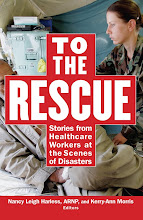
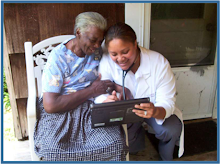












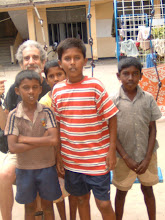





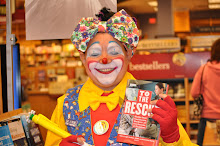



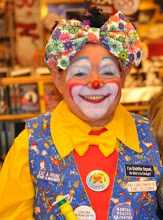




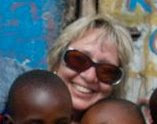


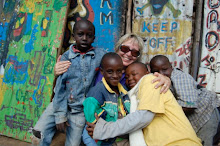






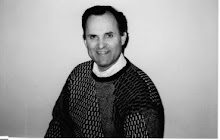






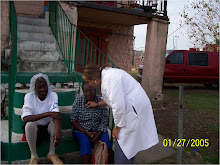






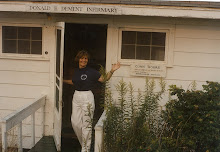




No comments:
Post a Comment